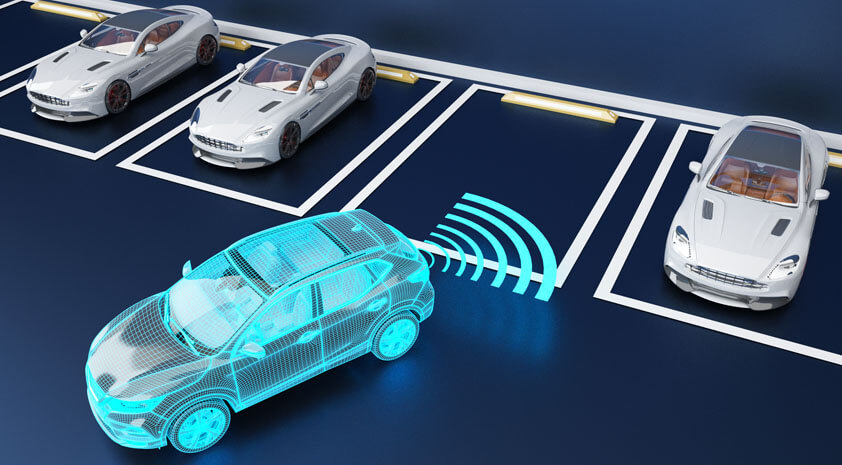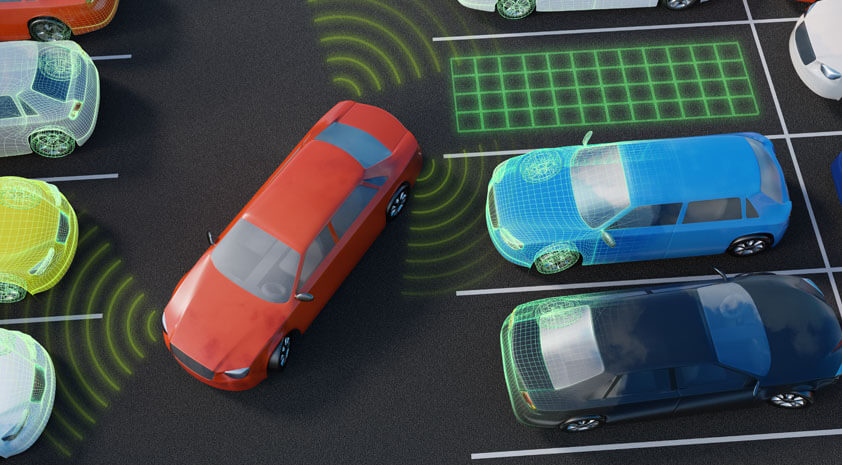With the rapid advancement of technology, advanced driver assistance systems (ADAS) are constantly emerging with a variety of derivative assistance functions. The original intention of these functions is to assist drivers in improving driving pleasure and driving safety. Among these many functions, the automatic parking assist is one of them.
Automatic Parking Assist, also known as park assist or parking assistance system. The system uses cameras, sensors or radar technology to detect obstacles around the vehicle, and when the driver activates the automatic parking assist function, the system takes over and assists the parking process. These sensors are usually mounted on the front, rear, and sometimes on the sides of the car.

How does the automatic parking assist work? Depending on the manufacturer, the exact implementation process may vary slightly, but the basic process is as follows:
1. Activation: The driver activates the automatic parking assist system by pressing a button or through the vehicle's information system.
2. Search for parking locations: The system uses various sensors to scan the surrounding environment and identify potential parking spaces.
3. Detecting obstacles: Sensors continuously monitor the area around the car, detecting obstacles such as walls, pedestrians and other vehicles. This information is used to ensure safe parking and prevent collisions during maneuvers.
4. Calculate parking path: When a suitable parking space is detected, the system calculates the trajectory and necessary steering input to guide the vehicle into the parking space. In the process, it takes into account the size of the car and the space available to perform the maneuver accurately.
5. Steering assist: The automatic parking assist system takes control of the steering wheel and starts driving the vehicle. The driver controls speed by depressing the brake or gas pedal, while the system handles precise steering movements.
6. Visual and auditory prompts: During the driver's parking process, the system will provide visual and auditory prompts to guide the driver. These offers include scene-guiding instructions or voice prompts on the vehicle's infotainment screen.
7. Monitoring and intervention: During the parking process, the system will always monitor the surrounding environment. If any unexpected obstacles appear, the system may pause or stop the parking process, and remind the driver to manually control it.
8. Complete parking: When the vehicle is successfully parked in the parking space, the automatic parking assist system will send out a parking completion signal. At this point, the driver can take back full control of the vehicle.
The automatic parking assist system only assists the driver during the parking process, but the driver is still responsible for the overall control of the vehicle. As with any advanced driver assistance system, the driver must remain focused, ready to intervene if necessary and utilize the mirrors and surroundings to ensure safe parking maneuvers.

Automatic Parking Assist is an advanced driver assistance system that helps drivers park more easily and accurately. It has the following advantages:
1. Reduce stress and anxiety: For drivers who do not have good parking skills, this system can provide great help during the parking process, which can relieve the driver's stress and anxiety, provide peace of mind and confidence, and make them less nervous.
2. Time-saving: The automatic parking assist system allows the driver to park faster and more efficiently, thus saving time in finding a suitable parking space and maneuvering the vehicle into place.
3. Improve parking precision: Compared with manual parking, APA utilizes various sensors to calculate precise steering input, which can achieve more accurate parking. The risk of accidental collisions with other vehicles or obstacles is reduced.
4. Safety benefits: APA's sensors can detect potential obstacles and warn the driver, which helps prevent accidents during parking.
5. Integration with surround view cameras: Some APA systems work in tandem with surround view cameras to provide a 360-degree view of the vehicle's surroundings. This enhances driver awareness and improves overall safety.
Automated Parking Assist makes parking a lot easier, taking the stress out of many drivers. While it can provide valuable assistance, it also requires the driver to remain focused. Use your rearview mirror and be ready to intervene if needed.
As an automotive parking aid, the future development of Automatic Parking Assist (APA) is likely to bring several improvements and innovations. Some potential future developments for the APA include:
1. Artificial intelligence and machine learning: The APA system can integrate artificial intelligence and machine learning algorithms. Continuously improve its parking capabilities based on real data and user feedback. This results in more adaptive and efficient parking operations.
2. More advanced sensor technology: In the future, the APA system may use more advanced sensors to provide a more detailed and comprehensive view of the vehicle's surrounding environment. This can provide the system's ability to detect obstacles and navigate complex parking scenarios.
3. Improved parking algorithm: In the future, the APA system may adopt a more complex parking algorithm considering factors such as road conditions, weather and other vehicle behaviors. This will enhance the system's ability to handle challenging parking situations.
4. Remote parking assist: Drivers can remotely control parking operations from outside the vehicle using a smartphone app or key fob. This is especially useful when entering and exiting vehicles in tight spaces.
5. Multi-directional parking: Future APA systems may enable diagonal or angled parking, not just parallel or perpendicular. This maximizes space and offers the driver greater flexibility.
6. Integration with Internet infrastructure: APA integrates with city infrastructure, allowing vehicles to communicate with parking structures or parking lots to automatically find available parking spaces.
7. Compatible with different parking scenes: APA can adapt to a wider range of parking scenes, such as parking on hillsides and parking on uneven terrain.
8. Gesture control and voice commands: Future APA systems could incorporate gesture control or voice commands, allowing drivers to initiate parking maneuvers without physical buttons.
The development and deployment of future APA technologies will require extensive testing, validation, and adherence to safety standards to ensure system reliability and effectiveness. Additionally, the regulatory framework and public acceptance will play a crucial role in shaping the future of automated parking assist and other advanced driver assistance features.
Return